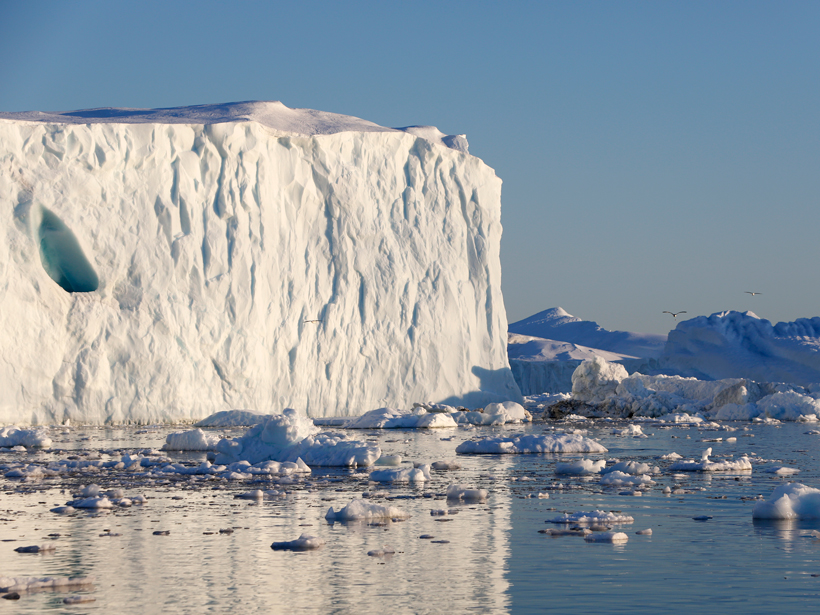Many of our colleagues, and concerned citizens, have asked how to respond to climate contrarians who claim that they don’t “believe” in climate change, or have fallen prey to disinformation publicized by those with vested interests in fossil fuels and related industries. In some cases, simple facts and logic can help such people understand the realities of the earth system and how it is responding (and will respond further) to anthropogenic perturbations such as greenhouse gas emissions.
However, there are many others for whom this approach proves ineffective. Holding a worldview that would seem anathema to any scientist, many of our fellow citizens do not use direct observation, evidence, or science in general, as their primary basis for decision-making. No amount of factual education can alter this worldview, and it has become clear that other means must be found to prevent this segment of the population from making self-harming decisions, whether induced by disinformation or otherwise.
Some of these issues were articulated in a special session at the recent AGU meeting on Climate Literacy. In one presentation, Naomi Oreskes suggested that the human brain’s decision-making centers are more closely related to emotional centers than they are to rational thought and reasoning, citing the 19th century “miracle” case of Phineas Gage as a rare example of the link between emotions and decision-making. While people do not typically have iron rods driven through their heads, this further supports the general theme that emerged from the AGU session that a significant segment of the population will respond better to emotional messages than to factual information. As a scientific community, we are a long way off from being able to communicate on that level, yet it appears that a way must be found.
Meanwhile, for those who may respond to a logical sequence of reasoning, the following questions should be asked and answered in sequence. Hopefully this can assist the scientific community in communicating some simple concepts to broad audiences.
1. Is climate changing?
Yes. Scientific observations and measurements have provided undeniable data that show temperatures have been rising, precipitation patterns have been changing, and ocean and atmospheric circulation systems have been changing throughout the 20th and 21st centuries.
2. Do people have anything to do with it?
Yes. Greenhouse gas emissions (primarily carbon dioxide from fossil fuel burning) have to warm the atmosphere—it is what they do. The consensus of model results shows that the global climate is sufficiently sensitive to historic anthropogenic carbon dioxide emissions to have already warmed by the amount measured over the last 150 years. In addition, carbon dioxide triggers a water vapor feedback, greatly amplifying the effect, as warm air can hold more water vapor than cold air.
3. Is climate change bad?
Yes. While this is a more normative question to be considered by philosophers and the general public rather than by scientists, history has shown that any change in the environment of stable civilizations is disruptive to those civilizations. Alterations in areas in which crops can be grown, changes in phenology (when plants bloom or flower, when leaves fall, when insects emerge, etc.), shifting storm tracks, and rising sea level may have devastating economic, social, and political consequences on modern societies.
4. Can we do anything about it?
Yes. Because much of the warming caused by past emissions has already occurred, cessation of emissions can stabilize climate in the 21st century. Until they are overwhelmed, natural carbon sinks in the ocean and terrestrial ecosystems can continue to absorb previously emitted carbon and return global climate to the stable state in which civilization evolved over the last 10,000 years.
5. Is it worth doing anything about?
Yes. Economic analyses indicate that the cost of adaptation to climate change in the form of agricultural disruptions, damage to coastal cities and infrastructure, and impacts of extreme events will be much greater than the cost of mitigation by transition to sustainable energy sources.
What we learn from the past is that nearly every major climate change in Earth’s history has been accompanied by changes in greenhouse gases, with warming associated with more carbon dioxide and cooling associated with less. In the geologic past, before humans existed, climate and atmospheric carbon dioxide concentrations varied together, with carbon dioxide change not always predating climate change. This was due to the runaway feedbacks between temperature, carbon dioxide in the atmosphere and ocean, and water vapor in the atmosphere. However, now that we have devised a way to inject carbon dioxide directly into the atmosphere (fossil fuel burning), carbon dioxide is preceding climate warming, which is already responding to the additional greenhouse gases.
–Dork Sahagian, Department of Earth and Environmental Sciences, Lehigh University; email: [email protected]
Citation:
Sahagian, D. (2017), Responding to climate change deniers with simple facts and logic, Eos, 98, https://doi.org/10.1029/2018EO065273. Published on 30 March 2017.
Text © 2017. The authors. CC BY-NC-ND 3.0
Except where otherwise noted, images are subject to copyright. Any reuse without express permission from the copyright owner is prohibited.

